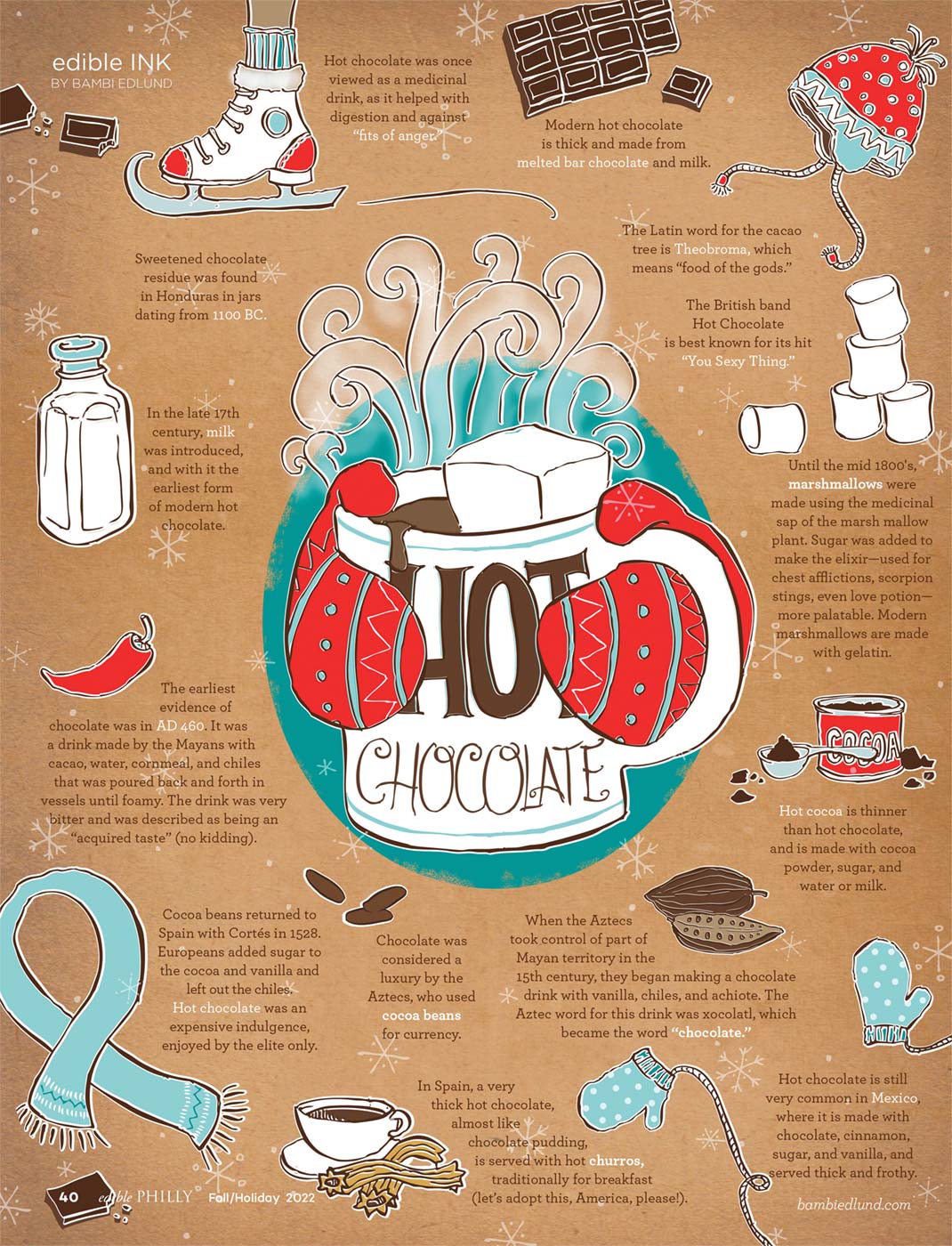Hot Chocolate

Hot chocolate was once viewed as a medicinal drink, as it helped with digestion and against “fits of anger.”
Modern hot chocolate is thick and made from melted bar chocolate and milk.
Sweetened chocolate residue was found in Honduras in jars dating from 1100 BC.
The Latin word for the cacao tree is Theobroma, which means “food of the gods.”
The British band Hot Chocolate is best known for its hit “You Sexy Thing.”
In the late 17th century, milk was introduced, and with it the earliest form of modern hot chocolate.
Until the mid 1800's, marshmallows were made using the medicinal sap of the marsh mallow plant. Sugar was added to make the elixir—used for chest aictions, scorpion stings, even love potion— more palatable. Modern marshmallows are made with gelatin.
The earliest evidence of chocolate was in AD 460. It was a drink made by the Mayans with cacao, water, cornmeal, and chiles that was poured back and forth in vessels until foamy. The drink was very bitter and was described as being an “acquired taste” (no kidding).
Hot cocoa is thinner than hot chocolate, and is made with cocoa powder, sugar, and water or milk.
Cocoa beans returned to Spain with Cortés in 1528. Europeans added sugar to the cocoa and vanilla and left out the chiles. Hot chocolate was an expensive indulgence, enjoyed by the elite only.
Chocolate was considered a luxury by the Aztecs, who used cocoa beans for currency.
When the Aztecs took control of part of Mayan territory in the 15th century, they began making a chocolate drink with vanilla, chiles, and achiote. The Aztec word for this drink was xocolatl, which became the word “chocolate.”
In Spain, a very thick hot chocolate, almost like chocolate pudding, is served with hot churros, traditionally for breakfast (let’s adopt this, America, please!).
Hot chocolate is still very common in Mexico, where it is made with chocolate, cinnamon, sugar, and vanilla, and served thick and frothy.



